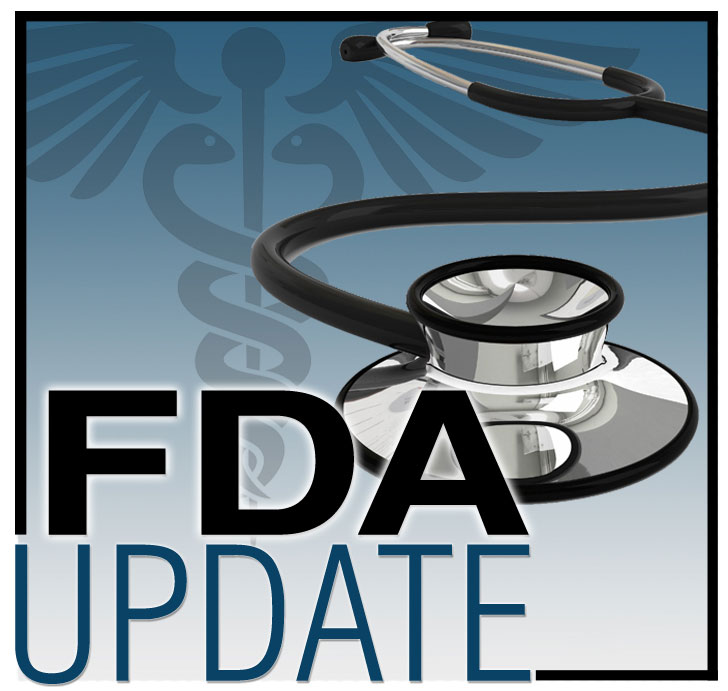FDA Amends EUAs With Booster Doses for COVID-19 Vaccines
On October 20, 2021, the U.S. Food and Drug Administration (FDA) amended (https://www.fda.gov/news-events/press-announcements/coronavirus-covid-19-update-fda-takes-additional-actions-use-booster-dose-covid-19-vaccines) the emergency use authorizations (EUAs) for the Moderna and Janssen (Johnson and Johnson) COVID-19 vaccines to allow for the use of a single booster dose for certain populations.

FDA reported that the use of a single booster dose of the Moderna COVID-19 vaccine may be administered at least six months after completion of the primary series to individuals aged 65 and older, individuals aged 18–64 at high risk for severe COVID-19, and individuals aged 18–64 with frequent institutional or occupational exposure to SARS-CoV-2. The use of a single booster dose of the Janssen COVID-19 vaccine may be administered at least two months after completion of the single-dose primary regimen to individuals aged 18 and older.
Additionally, FDA said that any available COVID-19 vaccine may be used as a heterologous (or “mix and match”) booster dose in eligible individuals following completion of primary vaccination with a different available COVID-19 vaccine.
FDA previously reported (https://voice.ons.org/news-and-views/fda-authorizes-booster-dose-of-pfizer-biontech-covid-19-vaccine-for-certain) the authorization of the booster dose of Pfizer-BioNTech’s COVID-19 vaccine for certain populations in September 2021.
Authorization of Moderna COVID-19 Vaccine Booster Dose
The EUA amendment for the Moderna COVID-19 is based on an analysis of immune response data from 149 participants aged 18 and older in the vaccine’s clinical trials who received a booster dose at least six months after their second dose. The analysis compared their immune response to those of a control group of 1,055 study participants after completing their two-dose series. The booster group demonstrated an antibody response against SARS-CoV-2 virus 29 days after receiving the booster dose, whereas the control group did not.
Safety was evaluated in 171 participants aged 18 and older who were followed for an average of approximately six months. The most commonly reported side effects after the booster dose were pain at the injection site, tiredness, headache, muscle or joint pain, chills, swollen lymph nodes in same arm as the injection, nausea and vomiting, and fever. Swollen lymph nodes in the underarm were observed more frequently following the booster dose than after the primary two-dose series.
Ongoing analyses from FDA and the Centers for Disease Control and Prevention (CDC) safety surveillance systems have identified increased risks of inflammatory heart conditions, myocarditis and pericarditis, following vaccination with the Moderna COVID-19 vaccine, particularly following the second dose. Typically, onset of symptoms has been a few days following vaccination. The observed risk is higher among males younger than age 40 years, particularly those aged 18–24.
Authorization of Janssen COVID-19 Vaccine Booster Dose
The EUA amendment for the Janssen COVID-19 vaccine is based on FDA’s evaluation of immune response data in 39 participants from a clinical trial, including 24 participants aged 18–55 and 15 participants aged 65 and older. The study participants received a booster dose approximately two months after their first dose, and the results demonstrated a booster response.
Approximately 9,000 clinical trial participants received two doses of the vaccine administered at least two months apart. Approximately 2,700 had at least two months of safety follow-up after the booster dose. Janssen’s safety analyses have not identified new concerns.
Earlier analyses from FDA and CDC safety surveillance systems suggest an increased risk of thrombocytopenia syndrome (TTS), a serious and rare type of blood clot in combination with low blood platelets following administration of the Janssen COVID-19 vaccine. Individuals who developed TTS after receiving the vaccine reported symptoms about one to two weeks after vaccination. Reporting of TTS has been highest in females aged 18–49. In addition, safety surveillance suggests an increased risk of Guillain Barré syndrome within 42 days of vaccination.
Authorization of “Mix and Match” Booster Dose
Following a presentation of clinical trial data from the National Institute of Allergy and Infectious Diseases, the Vaccines and Related Biological Products Advisory Committee’s discussion of information submitted for consideration, along with the agency’s evaluation of the available data, FDA determined that the known and potential benefits of the use of a single heterologous booster dose outweigh the known and potential risks of their use in eligible populations.
A single booster dose of any of the available COVID-19 vaccines may be administered as a heterologous booster dose following completion of primary vaccination with a different COVID-19 vaccine. The eligible populations and dosing interval for a heterologous booster dose are the same as those authorized for a booster dose of the vaccine used for primary vaccination.
Healthcare professionals should report all serious adverse events they suspect to be associated with the use of any medicine and device to FDA’s MedWatch Reporting System (https://www.accessdata.fda.gov/scripts/medwatch/index.cfm) or by calling 800-FDA-1088.
